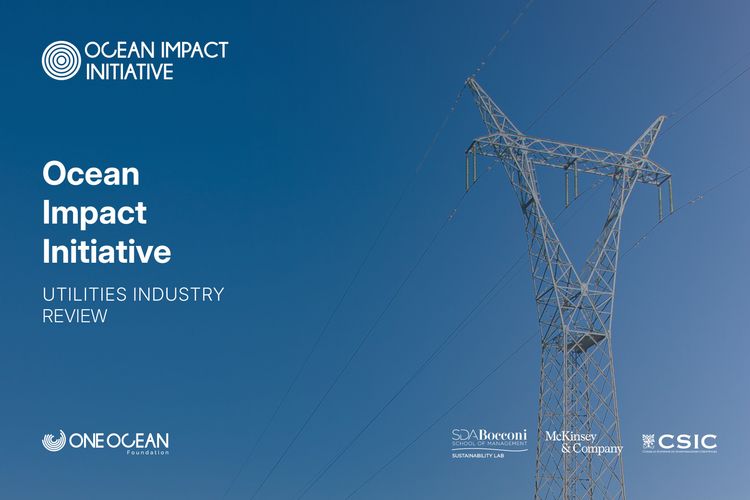
The utilities sector provides the essential infrastructure that powers society - ensuring the transmission and distribution of energy, the supply and treatment of water, and the waste management. Yet, behind these essential services lies a significant environmental footprint. From wastewater discharges to energy use and material waste, utilities can directly and indirectly affect the ocean.
This report, developed as part of the Ocean Impact Initiative, examines the pressures of the utilities industry on the ocean and highlights good practices to mitigate them.
The review explores three key segments - water utilities, energy utilities, and waste utilities - reflecting the broad scope and systemic importance of the sector.
DOWNLOAD THE REVIEW
Potential pressures of the utilities industry on the ocean
- Introduction of contaminants: Inadequate wastewater treatment, leachate from landfills, and degradation of infrastructure materials can introduce these contaminants into marine ecosystems.
- Eutrophication: Nutrient-rich discharges from wastewater and runoff from landfills can cause algal blooms and oxygen depletion in coastal waters.
- Loss of biodiversity: Pollution, habitat alteration, and infrastructure development disrupt marine ecosystems and reduce biodiversity.
- Seafloor integrity: Construction of pipelines and subsea cables can damage seabed habitats and resuspend sediments.
- Marine litter: Operational waste, construction debris, and microplastics from treatment systems contribute to ocean pollution.
- Introduction of energy: Noise and electromagnetic disturbances from utility infrastructure can disturb marine and coastal species.
- GHG emissions: Energy-intensive operations release significant emissions from water treatment, transmission of energy, and waste decomposition processes.
Sustainable practices to mitigate the industry’s impact
- Implement advanced water treatment technologies, enhance leachate collection and use non-toxic, durable materials to prevent contaminant discharge.
- Adopt nutrient removal systems and green infrastructure to reduce nutrient runoff and eutrophication.
- Minimise habitat disturbance during construction, establish buffer zones around sensitive areas, and invest in restoration projects to protect biodiversity.
- Apply low-impact construction methods and restore seabed habitats after installation or maintenance works to preserve seafloor integrity.
- Enhance solid waste management, apply advanced filtration to capture microplastics in treatment systems, and promote recycling and material reuse to minimise marine litter.
- Reduce noise and electromagnetic emissions through low-impact equipment, vibration-dampening systems, and sound barriers in treatment and pumping facilities.
- Improve energy efficiency, recover biogas, and increase renewable energy sourcing to lower emissions.
This review underscores the contribution of One Ocean Foundation to foster sustainable growth in the utilities industry while safeguarding marine ecosystems.


